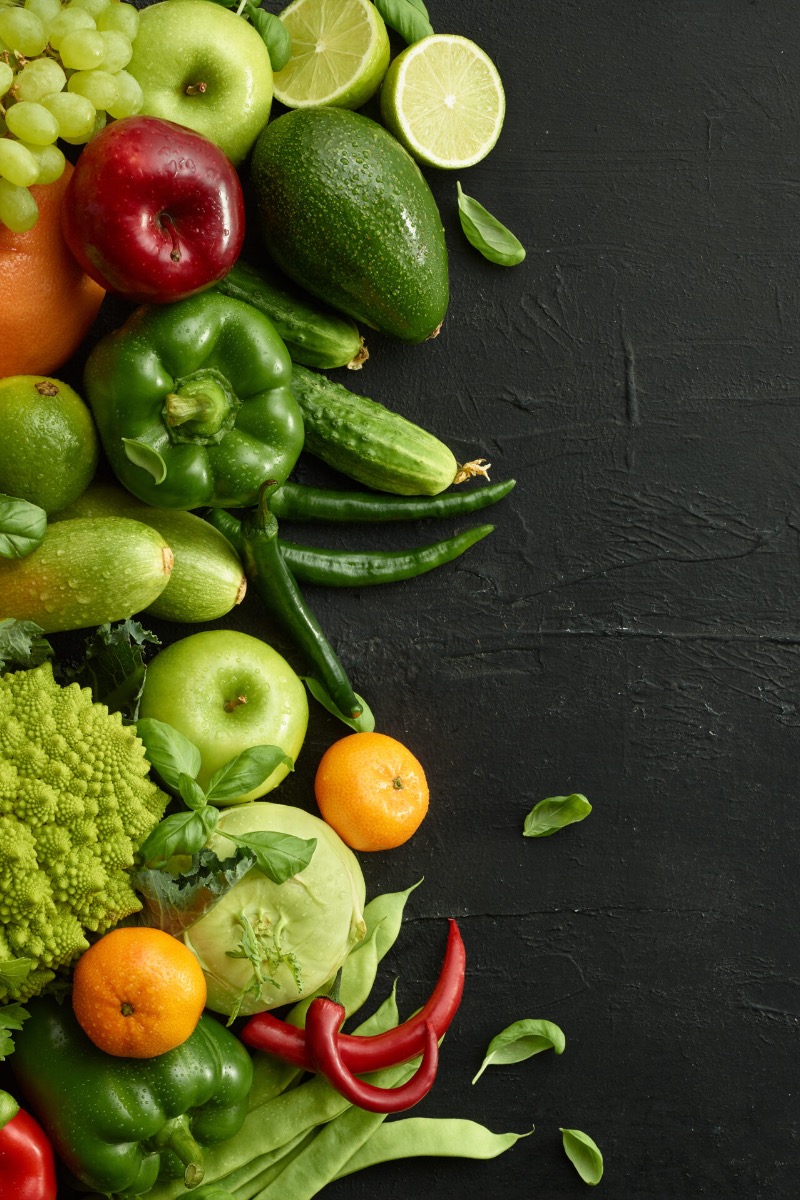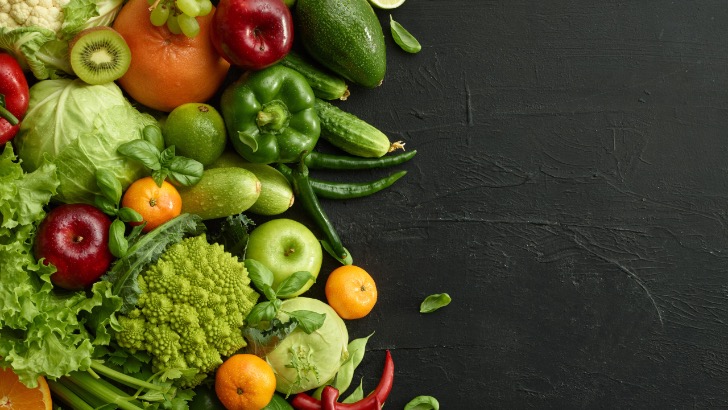It can be difficult when it comes to getting your family to consume their vegetables. It might taste dull or unpleasant, and you might even think it’s a lot of effort to prepare. Fortunately, there is a range of simple methods for improving the flavour of your vegetables. You’ll be amazed by the results if you put these tips into practice. You’ll eventually find yourself begging for more! These simple guidelines will assist you in transforming any vegetable into a delectable snack.

Even though vegetables are generally derided as being bland, they can be rather delicious and can be used to create a delightful meal. Making veggies taste better is all about learning the proper preparation methods, which includes everything from selecting the right pieces of produce at the shop to cooking them or assembling a meal in the kitchen. Not to mention that it’s typically as simple as making a few minor adjustments to what you’re already doing to make a significant difference.
How to make vegetables taste good?
In many cases, people who aren’t getting sufficient amounts of vegetables complain that they don’t like most veggies’ flavours or that such flavours are overused and monotonous once they become used to them. However, the good news is that there are numerous methods to prepare veggies that are nutritious and delectably tasty. Different cooking methods and a range of herbs, spices, and flavourings provide an almost limitless number of recipe possibilities.
Are you interested in learning how to make your vegetables taste better and more flavorful? Follow these simple guidelines to make vegetables taste so delicious that you won’t be able to stop eating them!
Try different cooking styles
Few individuals love steamed or boiled vegetables with little or no flavour. When cooked this way, many veggies become mushy and bland. Lengthy cooking processes (particularly boiling) can also drain essential vitamins. Fortunately, there are a variety of cooking techniques that might assist you in discovering new vegetable recipes.
- Air Frying: Using an air fryer to acquire the delightful, crunchy taste of fried food without the extra fat and calories has become increasingly popular.
- Grilling: A simple and delicious way to prepare vegetables is to grill them with a touch of salt and pepper and a drizzle of olive oil. Grilled vegetables can also be tossed in a vinaigrette dressing or topped with chopped herbs.
- Oven Roasted: Cooking veggies in a 400°F oven with a splash of olive oil brings out a sweeter flavour. Oil can assist in the absorption of fat-soluble vitamins.
- Sautéed: Cooking vegetables on the stovetop in butter or oil is a popular preparation method. The added fat enhances the absorption of fat-soluble vitamins in vegetables, similar to roasting. Use a tiny amount of oil and add vegetable broth or chicken stock while the vegetables simmer to keep them from getting too browned or sticking to the pan, lowering the fat and calorie count. While practically any vegetable can be sautéed, leafy greens like kale, mustard greens, or spinach work well.
- Blanched: Blanched veggies are blanched by briefly immersing them in boiling water and cooling them in an ice bath. This is a terrific way to add colour to veggies and serve as a crudite with a tasty dip like guacamole or yogurt.
Enhance the flavor
If you think you can’t bear the taste of vegetables, it’s possible they just need additional seasoning. Consider the foods that you genuinely appreciate. What spices are used to season them? Those same spices and seasonings can often be used to improve the flavour of veggies.
- Mexican style: Sprinkle cumin, pepper, or even Tabasco sauce on sliced zucchini or yellow squash if you like tacos and nachos. Preheat the oven to 425°F and roast the vegetables for about 10 minutes.
- Top with fresh herbs: Chop fresh herbs like tarragon and mix with a teaspoon of olive oil à la française. Brush lightly with olive oil and roast for 5 to 10 minutes.
- Indian seasonings: If you like Indian food, season eggplant or another soft vegetable with curry powder and grill or roast for 25 to 30 minutes.
- Vinegar or juice: You can also incorporate juice, a freshly squeezed lemon, or vinegar to give it a different flavour. Drizzle it on top before serving or add it throughout the cooking process. Whether fresh or dried, herbs and spices provide a new complexity to vegetable meals.
- Garlic: A vegetable in and of itself, garlic has the power to convert a bland dish into one that you can’t get enough of. You can buy garlic as a bulb or pre-prepared in a jar to save time, and it goes well with roasted and sautéed foods.
- Cooking Oils: Cooking oils are available in various flavours, each of which adds a unique dimension to a recipe. Coconut oil, for example, has a distinct flavour from olive oil. To determine your favourites, try a variety of oil and spice combinations.
- Cheese: While you don’t want to drown your vegetables with cheese sauce, a sprinkling of strong-flavoured cheese like Parmesan or Manchego on the finished dish might provide some more flavour.
- Add a sweet glaze: Earthy vegetables such as Brussels sprouts, parsnips, and turnips have a harsh flavour that might persist after roasting. A sugary glaze is an ideal method to counteract this. Drizzle a balsamic sauce, maple syrup, or honey overcooked Brussels or root vegetables to give a touch of sweetness that will transform your dinner.
Conceal them
If you still can’t stand vegetables, try hiding them in some of your favourite dishes. Steamed broccoli, for example, can be chopped into small bits and used as a low-fat turkey meatloaf. The broccoli will be hidden by the loaf’s mixed flavours, and you’ll get one or two servings of vegetables in a lean and hearty dinner.
Vegetables can also be included in your favourite sweet smoothie recipe without altering the taste. When carrots are put into a strawberry or raspberry smoothie, for example, they add flavour and colour. Finally, soups are an excellent method to increase your vegetable intake. Cauliflower is used in many creamy soup recipes to provide texture and complement traditional ingredients like potatoes. You’ll soon find yourself desiring vegetables with one of your learned strategies.
What methods do restaurants use to make vegetables taste good?
The secret to those delicious vegetables is that the cooks lavishly coat them in butter, sugar, and salt before serving them. These ingredients are used in practically every restaurant dish because they are excellent at complementing the flavours of other components. To grease pans and season menu items to individual preferences, line cooks typically always have butter and salt on hand at their workstations.
What are some decent veggie seasonings?
Vegetables can be prepared using any of the familiar and preferred herbs available. Herbs such as oregano, basil, parsley, thyme, rosemary, chervil, Tarragon, coriander, cumin, dill, ginger, garlic, lemongrass, and curry are examples of such spices and seasoning combinations. Seasonings such as cinnamon, nutmeg, and cloves can also be added to veggies to boost their spicy flavour.
What is the best way to prepare vegetables the day before?
Preparing your vegetables the night before is a good idea. Peel the potatoes, carrots, parsnips, and any other vegetables you’ll be using and place them in pans of cold water overnight to keep them from becoming brown. This will save you a great deal of time and effort on Christmas morning and other mess.
Preparation includes the following steps: washing, drying, peeling (if applicable), and cutting up. Place a damp paper towel on top of the sliced vegetables before placing them in an airtight container in the refrigerator to prevent them from drying out. You may also prepare vegetables ahead of time and store them in the refrigerator for up to 2 days.
What’s the best way to steam vegetables?
In a steam basket, to be precise.
Place the steamer basket in the bottom of your pan and cover it with 1 inch of water. Bring 1 cup of water to a boil, then remove from heat. Place the vegetables in a basket and cover with plastic wrap. Reduce the heat to medium and simmer for 4-5 minutes, or until the vegetables are soft.
Conclusion
Yes, we all know that eating your vegetables (particularly a variety of them!) is beneficial to your health in many ways, from brain and heart health to the proper functioning of your gut and neurological system. Vegetables tend to become more bitter as they mature and become more extensive, so go for baby ones if you’re not a fan. Don’t just roast or sauté some vegetables and season with salt and pepper. Experiment with new dishes, combine flavours and get creative in the kitchen. Vegetables can easily be the star of any meal rather than being overlooked as a side dish.
Adding cheese to your vegetables can also significantly enhance the dish’s flavour. This ingredient works well with any sort of vegetable, but it’s especially good with zucchini, potatoes, and asparagus. Vegetables with bitter flavours can be tempered with sweet glazes, which bring out their natural sweetness and bring out their natural sweetness. If you want to learn how to make vegetables taste delicious, continue reading about some of the best vegetable recipes available. All of these suggestions can assist you in preparing a delectable lunch.
